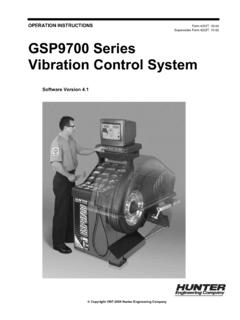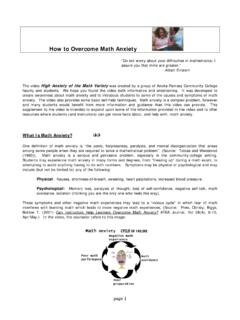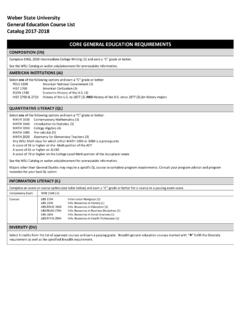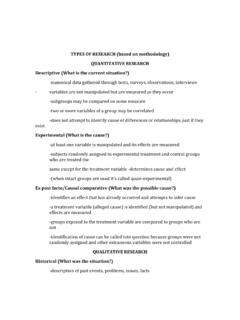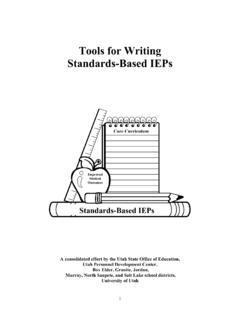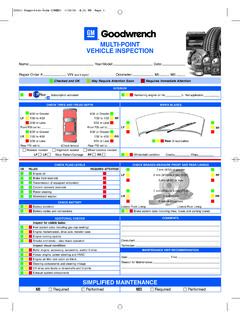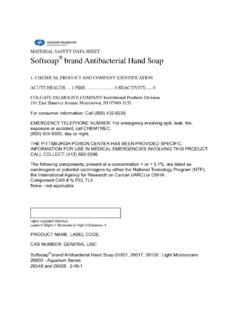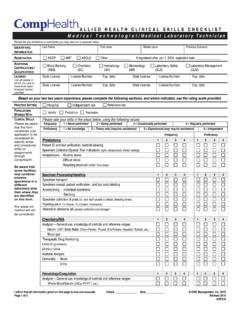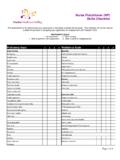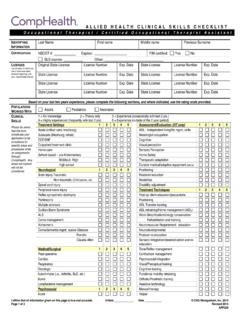Transcription of Online Clinical Competency Checklist CLS 2212 …
1 Student:_____ Wildcat ID #_____ Course Instructor: _____ Mentors (list all for this course):_____ Facility: _____ 1 =Discussed 2 = Demonstrated 3 = Practiced 4 = Performed under maximum supervision 5= performed under minimum supervision NA = Not applicable Online Clinical Competency Checklist CLS 2212 Introduction to Clinical Microbiology I Expected Achievement Student Score Date Complete Scoring Key Orientation and Lab Safety Review the laboratory s fire safety plan. 4 Locate Personal Protective equipment and MSDS. 4 Understand Universal Precautions for microbiology. 4 Labeling & Specimen ID Label specimens according to institutional policies. 5 Specimen set up & incubation Select proper media for specimens including plated media and broth media.
2 5 Understand specimen collection & rejection criteria. 5 Incubate specimens properly. 5 Inoculation Demonstrate plate streaking for isolation & quantitative streaking for urines. 5 Quality Control Perform quality control procedures in accordance with institutional policies for new media, reagents, and stock culture organisms. 4 Understand documentation & actions taken when results are not in acceptable limits. 4 Gram Staining Practice performing Gram stains until proficient. 5 Evaluate grams stains, including sputum samples, wounds, genital samples, and positive blood cultures until proficient. 5 Evaluation of primary cultures Evaluate cultures to recognize what is normal flora and what is significant. 4 Evaluate throat cultures & select next course of action.
3 4 Evaluate urine cultures to decide when susceptibility testing is warranted. 4 Evaluate vaginal cultures to recognize what is normal flora and what is significant. 4 Evaluate stool cultures to recognize what is normal and what to process further. 4 Evaluate body fluid cultures for pathogens. 4 Evaluate wound cultures to recognize what is significant -select next course of action. 4 Evaluate respiratory cultures, including sputum cultures. Recognize normal resp. flora & significant pathogens. 4 Blood Culture processing Demonstrate procedure for processing positive blood cultures including subcultures, Gram stains, and proper reporting of results. 3 Primary ID of organisms Recognize Streptococcus species & perform tests to classify them according to the Lancefield classification scheme.
4 4 Recognize & perform tests to identify Staphylococcus species. 4 Identify coagulase negative Staphylococcus species. 4 Online Clinical Competency Checklist CLS 2212 Introduction to Clinical Microbiology I Recognize and identify Haemophilus species. 4 Recognize and identify Neisseria species. 4 Recognize and perform biochemical tests to ID GNBs, including lactose fermenters, nonfermenters, and other miscellaneous GNBs. 4 Recognize and identify Campylobacter species. 4 Interpretation and Acceptance of results Discuss recording, reporting, and documenting results 1 Discuss which organisms are reportable to the State Health Department. 1 Serological testing Perform Rapid test for Group A Streptococcus, include proper labeling, QC, and reporting.
5 5 Affective Objectives Student demonstrates honesty by: Maintaining strict patient confidentiality 5 Accepting control values only when within acceptable limits. 5 Performing and documenting daily & weekly maintenance procedures, preventative maintenance, temperature checks, etc. 5 Completing all procedures in adherence to laboratory SOPs, taking no shortcuts or unauthorized modifications of procedure. 5 Personal Interactive Skills Student demonstrates proper professional behavior by: Working with co-workers in a positive manner, promoting productive workflow. 5 Refraining from making statements or actions that represent sexual, ethnic, racial, or homophobic harassment. 5 Willingly and consistently using appropriate personal safety devices when handling caustic, infectious, or hazardous materials.
6 5 Completing all required tasks and remaining in the work area when scheduled. 5 Being punctual whenever scheduled. 5 Adhering to current dress and appearance in the laboratory setting. 5 Cleaning the work area when leaving the laboratory, returning supplies to appropriate storage location, & disinfecting all work areas used by the student. 5 Professional Responsibility Student demonstrates appropriate professional affective behavior by: Correctly reporting all patient test values, as well as recognizing and correctly reporting all patient critical test values. 5 Resolving discrepancies in specimen labeling, handling, or collection before reporting patient results. 5 Based on performance is this the type of person you would consider for potential employment?
7 Y N Online Clinical Competency Checklist CLS 2212 Introduction to Clinical Microbiology I Comments: Please have all mentors sign and date below. Mentor Signature _____ Date _____ Mentor Signature _____ Date _____ Mentor Signature _____ Date _____ Mentor Signature _____ Date _____ Online Clinical Competency Checklist CLS 2212 Introduction to Clinical Microbiology I LABORATORY Clinical EXPERIENCE The CLS 2212 student has studied the following items in class this semester to prepare them for this laboratory skills Competency practical experience: Taxonomy and bacterial structure Gram staining Colonial morphology and hemolysis General media types Incubation requirements Normal flora Bacterial metabolism Characteristics, initial setup, identification, disease processes caused by and general treatment for the following organisms.
8 Streptococcus species Staphylococcus species Enterococcus species Neisseria species Moraxella catarrhalis Gram negative bacilli (all types except anaerobes) It is understood that the student may be introduced to organisms not yet covered in this semester s course (anaerobes, Gram positive bacilli, parasites, fungi, etc) in daily workload. If time permits, these organisms should be discussed. However, knowledge and Competency for these organisms is not required for this semester and course. The student should perform the following tasks (as deemed appropriate for students by the Clinical facility): Participate in culture set up procedures from labeling through incubation Perform and interpret Gram stains on both specimens and direct colonies Become familiar with automated instruments used in the Microbiology laboratory, including maintenance, Quality Control measures, operation and troubleshooting.
9 Participate in plate reading under direct supervision Participate in setup and interpretation of antimicrobial susceptibility testing Become familiar with processes for reviewing and reporting results, including STATs critical values Perform all procedures using the teaching institution s methodology and SOPs. Students should work with their respective mentors to complete the listed objectives. Accuracy, precision, timely reporting of results and demeanor must comply with the laboratory s acceptable standards. While working in the laboratory, the student must meet laboratory standards for work habit skills in patient confidentiality, communication skills, laboratory safety, universal precautions, waste disposal, equipment, and work area maintenance.
10 It is requested that the student s laboratory Online Clinical Competency Checklist CLS 2212 Introduction to Clinical Microbiology I Competency evaluation be completed by the Clinical mentor in the presence of the student, so as to allow verbal feedback to the student regarding the student s progress and performance. LEVELS OF ACHIEVEMENT LEVEL 1: Discussed: Process was discussed, principle explained, student acknowledges an understanding of the process or principle. LEVEL 2: Demonstrated: Process has been performed and demonstrated by the practicum instructor. Student has observed demonstration and has been allowed to ask questions as needed. The student acknowledges an understanding of the process or principle by verbally explaining the process or principle back to the practicum instructor.
